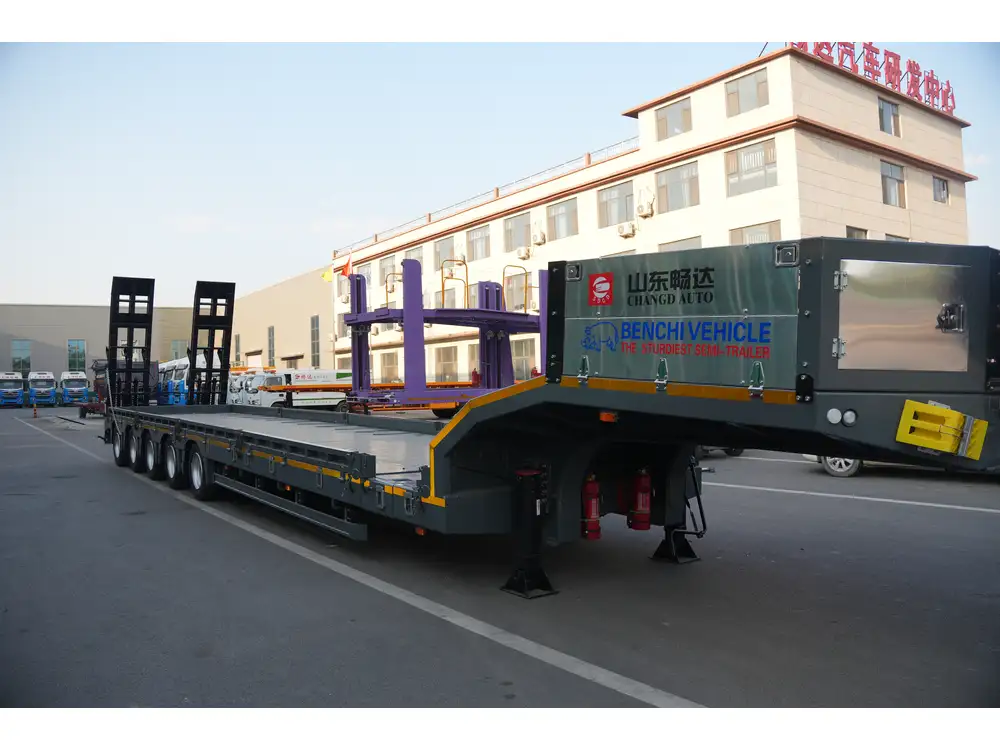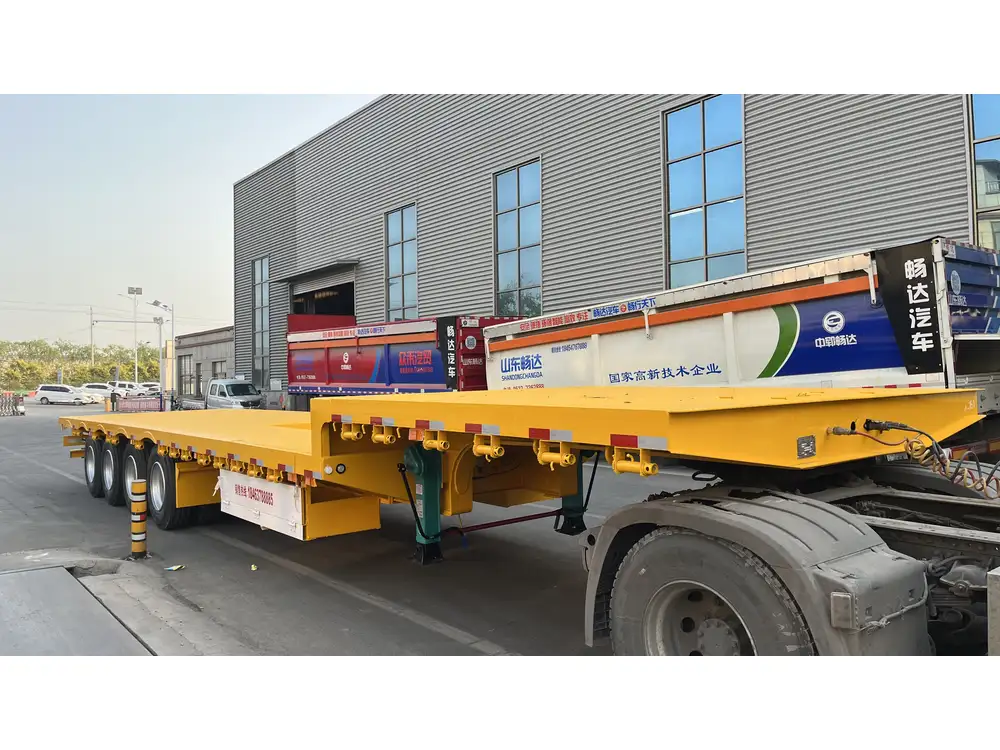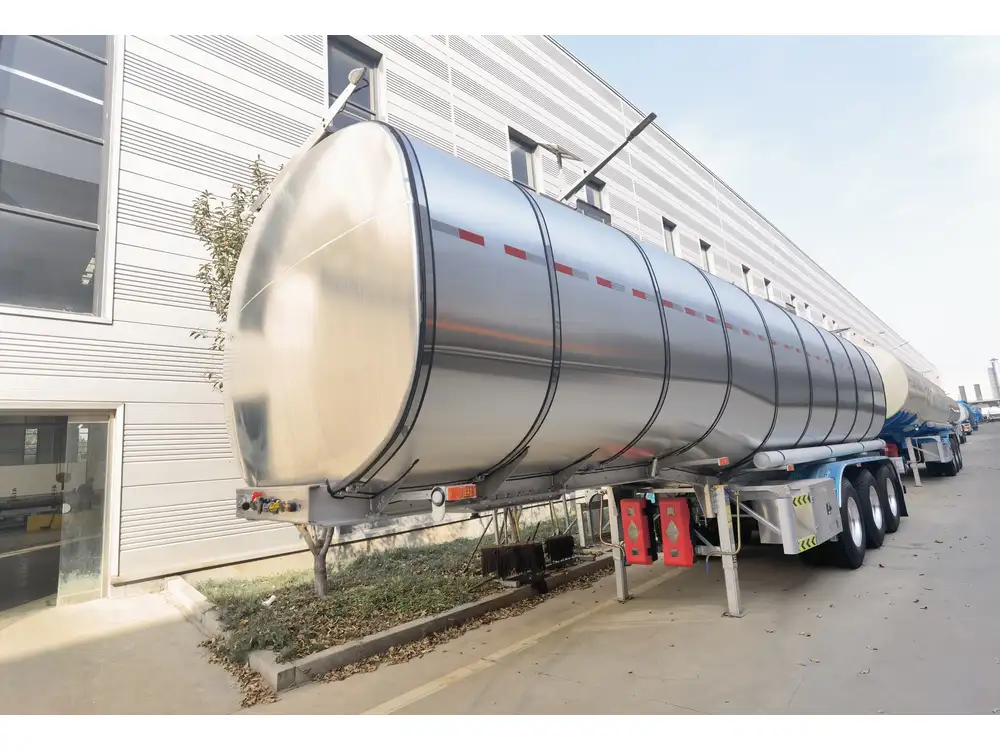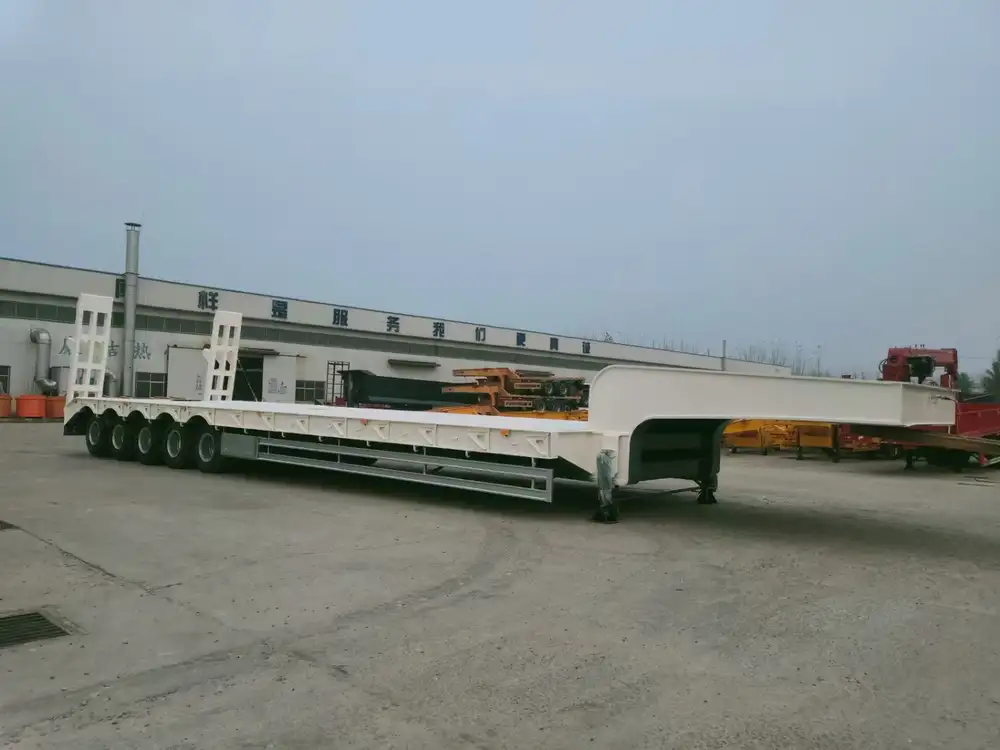Introduction to Semi-Trailer Trucks
The world of transportation is critical for trade and logistics, and at the heart of this system lies the semi-trailer truck. But what exactly is a semi-trailer truck called? Typically, it’s referred to simply as a “semi-trailer” or “semi-truck.” This versatile vehicle has transformed the way goods are transported across regions, offering enhanced flexibility, efficiency, and load capacity. In this article, we dissect various facets of semi-trailer trucks, examining their nomenclature, designs, functionalities, and roles in the logistics supply chain.
What Exactly Is a Semi-Trailer?
A semi-trailer is a truck trailer that doesn’t have a front axle. Instead, it is designed to be towed by a tractor unit, often referred to simply as a “truck” or “tractor.” The semi-trailer has wheels at the back and is connected to the tractor unit via a fifth wheel coupling. This setup provides several advantages:
- Load Capacity: Semi-trailers are engineered to carry heavy loads.
- Maneuverability: The design allows for sharper turns and better handling in tight spaces.
- Versatility: They can be interchanged with various tractor units, adding to their operational flexibility.

Technical Specifications of a Semi-Trailer
| Specification | Details |
|---|---|
| Length | Typically 48–53 feet |
| Width | 8.5 feet (102 inches) |
| Height | 13.5 feet (standard maximum) |
| Weight Capacity | Up to 34,000 pounds on average |
| Common Types | Flatbed, reefer, dry van, tankers |
Types of Semi-Trailer Trucks
1. Flatbed Trailers
Flatbed trailers are ideal for freight that is too large or heavy for traditional enclosed trailers. Their open deck allows oversized items—like machinery or construction materials—to be loaded and handled easily from any side.

2. Reefer Trailers
Reefer trailers, or refrigerated trailers, maintain specific temperature ranges for perishable goods. Used predominantly in the distribution of food products, these trailers come equipped with refrigeration units that can be adjusted according to the cargo requirements.
3. Dry Van Trailers
Dry van trailers provide an enclosed space tackling a wide range of commodities. Offering protection from weather and theft, they account for a large segment of freight transported across highways.
4. Tank Trailers
Tank trailers are specialized for hauling liquids, whether they be hazardous materials or food-grade products. These trailers have specialized tanks to ensure safe transport and compliance with regulations.

The Role of Semi-Trailer Trucks in Logistics
Improve Supply Chain Efficiency
Semi-trailer trucks are integral in streamlining the supply chain. They enable businesses to transport goods efficiently, making it possible to deliver products just in time for production cycles or retail needs. This adaptability can significantly reduce warehousing costs for companies.
Enhance Cost-Effectiveness
By utilizing semi-trailers, companies often find a marked reduction in transportation costs due to higher payload capacities and increased route versatility. This financial benefit can be passed on to consumers, making goods more accessible.

Sustainability Efforts
With the transportation industry making strides toward sustainability, semi-trailer trucks have adopted greener methodologies. These include:
- Alternative Fuels: Some companies are exploring electric or biofuel options.
- Aerodynamic Enhancements: More companies are investing in designs that reduce drag, thereby improving fuel efficiency.
Key Components of a Semi-Trailer Truck
To appreciate the complexities of semi-trailer trucks, it’s crucial to understand their key components.
Tractor Unit
The engine of the semi-trailer truck, the tractor unit is responsible for towing heavy loads. These engines typically range from 300 to 600 horsepower, enabling them to handle steep inclines and challenging road conditions.

Coupling System
The coupling system, particularly the fifth wheel, is a critical component that connects the trailer to the tractor. This setup allows the trailer to pivot independently of the truck, providing optimal maneuverability.
Suspension System
A robust suspension system enables a smoother ride for both the driver and the cargo. It absorbs road imperfectness and maintains load stability, minimizing wear and tear on the vehicle and its cargo.
Braking System
Braking systems have evolved, with many modern semi-trailers using air brakes that enhance safety and responsiveness. This system is crucial for stopping large vehicles and ensuring safety on highways.

Regulations Governing Semi-Trailer Trucks
Weight Limits
Understanding the legal regulations governing weight limits is crucial for compliance. In the United States, the Federal Bridge Weight Formula defines the maximum weight a semi-trailer truck can safely carry.
Licensing Requirements
Drivers must hold a Commercial Driver’s License (CDL) to operate a semi-trailer truck, ensuring they meet the skill and knowledge requirements for handling such powerful machinery.

Maintenance and Safety Inspections
Regular maintenance schedules and mandated safety inspections are essential for ensuring the safety of the truck, its driver, and other road users. These inspections often cover:
- Brake efficiency
- Tire integrity
- Coupling and electrical systems
Future of Semi-Trailer Trucks
Technological Innovations
The semi-trailer truck industry is on the brink of technological evolution. Electric engines are becoming viable, and automated driving systems are being tested. These innovations promise to enhance fuel efficiency and ensure safer transit.

Enhanced Tracking and Analytics
Companies are increasingly incorporating advanced tracking systems that leverage GPS and IoT devices. This technology not only optimizes route planning but enhances supply chain transparency, allowing businesses to monitor shipments in real time.
Environmental Impact and Solutions
With growing scrutiny on environmental practices, the manufacturing of semi-trailer trucks is evolving to meet new sustainability standards. Future trailers may incorporate:
- Lightweight Materials: Reducing overall weight without compromising strength.
- Smart Systems: Utilizing AI to improve fuel efficiency and emissions tracking.
Conclusion
Understanding what a semi-trailer truck is, its components, types, and the role it plays in the logistics industry is essential for anyone engaged in transportation, supply chain management, or manufacturing. The success and efficiency of goods transportation rest heavily on these machines. By appreciating their significance, stakeholders can make informed decisions regarding logistics strategies, procurement, and operational improvements. As the industry evolves, staying abreast of technological advancements and regulatory changes will be crucial for maintaining competitiveness.
As we navigate through the complexities of logistics, one thing remains clear: the semi-trailer truck will continue to be a cornerstone of transportation, driving the economy forward while adapting to the demands of an ever-changing world.



